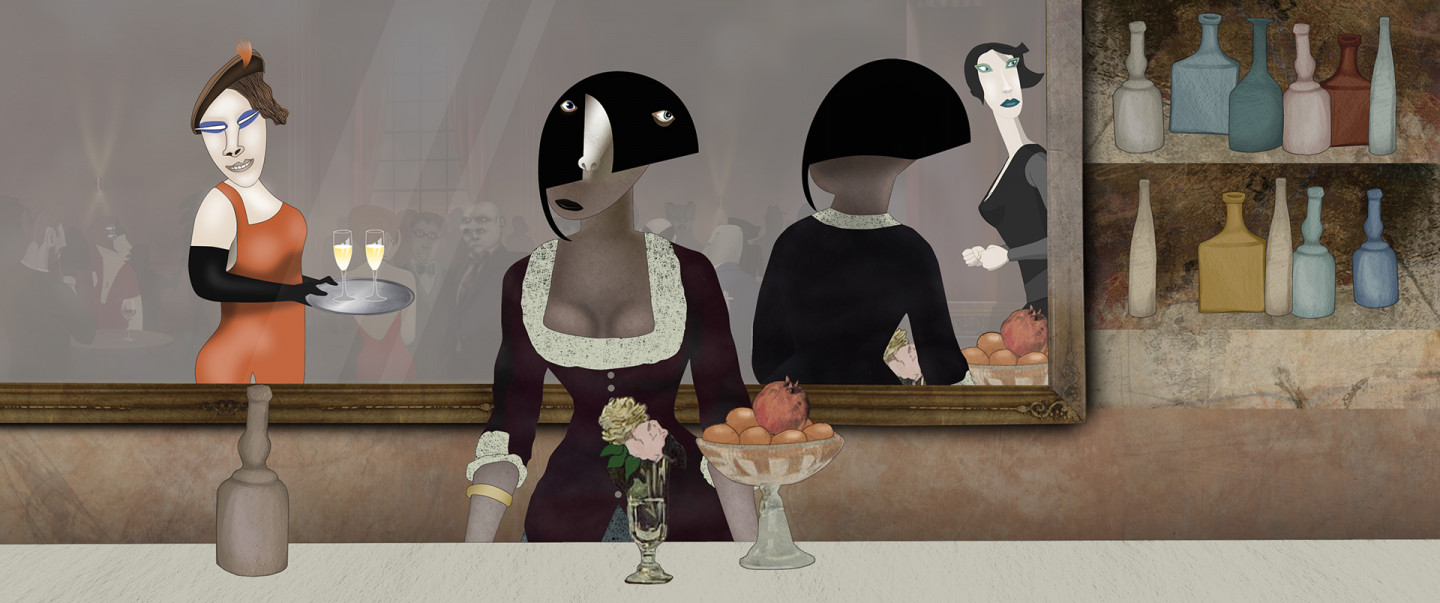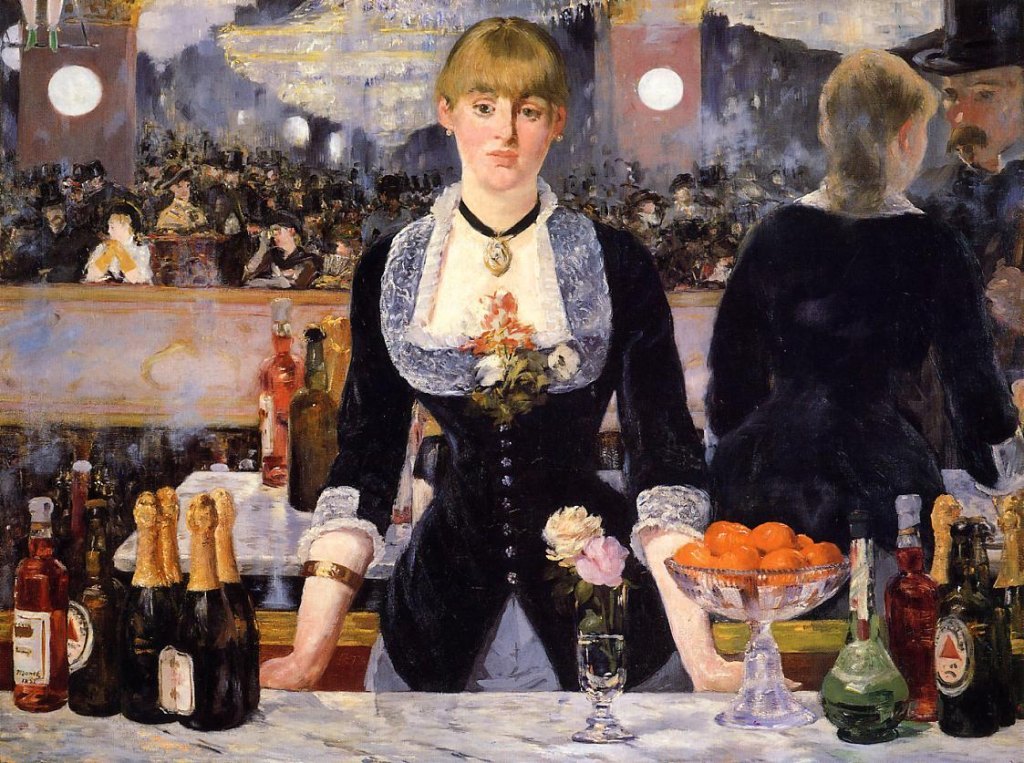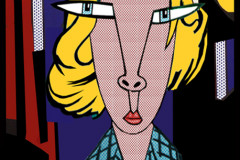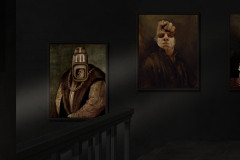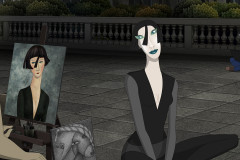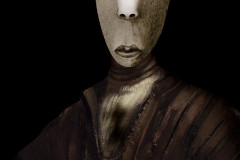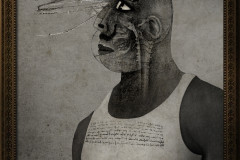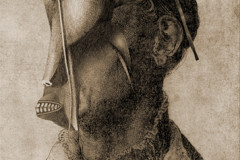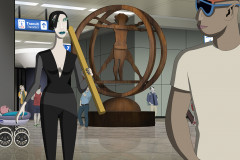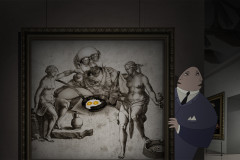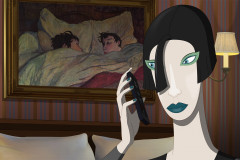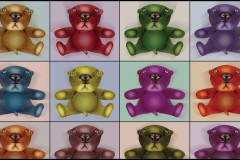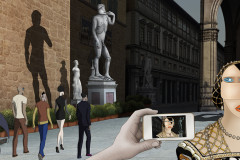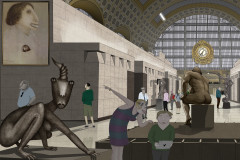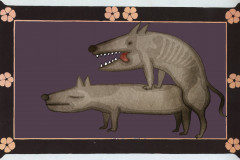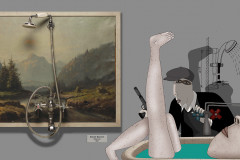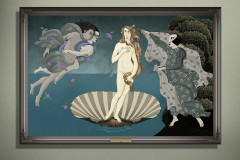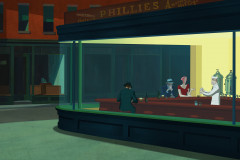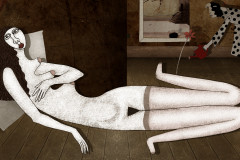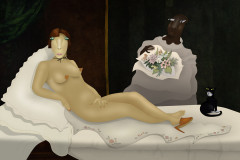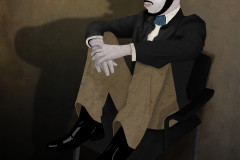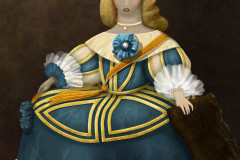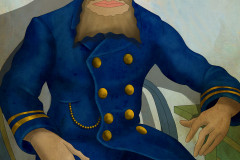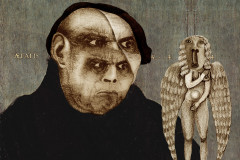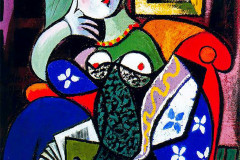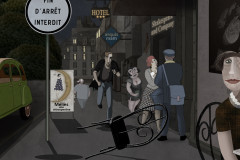Manet, Edouard (1832-1883): A Folies-Bergère bárja, 1882 (olaj, vászon, 96 x 130 cm), London, Courtauld Gallery. Az impresszionisták kortársa, példaképe, de náluk „klasszikusabb” Manet egyik utolsó nagy műve a párizsi társasági élet egy népszerű helyszínét örökíti meg. Tömeg, fények, csillogás, szórakozás – és a benne kiszolgáltatottan, közönyösen, fáradtan-szomorúan álló lány: mintha itt születne meg a mára már jól ismert nagyvárosi „társas magány” érzése. A lány még akkor is ott áll az egyik jelenetben – igaz, jóval csupaszabb pult előtt -, amikor Kowalski Párizson keresztül üldözi a Kleopátra legyezőjét ellopó Mimit.
Közvetlenül előttünk áll a pultos lány, mégsem vesz minket észre – és hiába van a kép középtengelyébe, „főszereplő”-helyre helyezve, mintha azt akarná, hogy mi se vegyük észre őt – saját gondolataiba mélyed, maga elé réved, mintha valami búra venné körül. Megérintően őszinte és személytelenségében is személyes pillanat, amellyel Manet nemcsak a lányt, hanem korának társadalmát is jellemzi. „Elidegenedés” - mondhatnánk, hiszen ember van itt bőven, látjuk őket a lány mögött elhelyezett tükörben, kapcsolat, komunikáció azonban nincs. Pedig kb. ott, ahol a festményt szemlélő néző áll, egy cilinderes vendég is van – őt is a tükörben látjuk. Klasszikus reneszánsz, barokk művekre jellemző tükörjáték ez, amely a nézőt is bevonja, viszont rögtön feltűnik, hogy „valami nem stimmel”: ha a teljesen szembe állított lányalak mögött tükörfal van, akkor a lány és a vendég tükörképét nem ilyen szögben kellene látnunk, hanem sokkal közelebb, szinte kitakarva a felénk forduló lány által. Manet minden kompozíciós tudatossága mellett volt már annyira „modern”, hogy ebben az esetben túllépett a tükörképszerkesztés szabályain, s megmutatta azt, amit szeretett volna. A kép egyébként rövid ideig (1917 és 1925 között) Hatvany Ferenc festő és műgyűjtő budapesti gyűjteményének darabja volt, ő vette Berlinben, majd adta el Londonba. Kár.
Édouard Manet (1832–1883): A Bar at the Folies-Bergère, 1882
Oil on canvas, 96 x 130 cm
Courtauld Gallery, London
One of the last great works by Manet—the contemporary and, in many ways, a role model for the Impressionists, yet more “classical” in approach—this painting depicts a vibrant scene from Parisian nightlife at the famous Folies-Bergère music hall. It’s a world of crowds, sparkling lights, entertainment… and at its center stands a barmaid, alone and resigned, exhausted or melancholic. She stands before us, yet seems not to see us—encapsulating the now familiar modern feeling of “urban loneliness.” In Ruben Brandt, Collector, she reappears behind a bar stripped of glamour as Kowalski chases Mimi across Paris for Cleopatra’s fan.
Though placed at the center of the painting—the "main character"—she doesn’t try to hold our gaze. Her thoughts are elsewhere, her eyes unfocused, as if encased in glass. Her isolation is all the more striking because the place is teeming with people—seen behind her in a large mirror reflecting the bustling interior of the hall. But there is no connection, no communication. Alienation.
The viewer notices a gentleman in a top hat in the mirror, standing where we—the viewers—would be. It’s a classical mirror-play, reminiscent of the Renaissance or Baroque masters, inviting us into the space. Yet something feels off: if the barmaid is facing us head-on, and there’s a mirror behind her, shouldn’t her reflection obscure the man’s image—or at least appear directly behind her? The perspective doesn't add up.
And this is where Manet becomes truly modern: he abandons the rules of optical correctness in favor of expressive composition. He shows what he wants to show—psychological and social truth, not geometric consistency.
For a time (1917–1925), this iconic painting was part of Hungarian painter and collector Hatvany Ferenc’s Budapest collection. He bought it in Berlin and later sold it to London. A loss for Hungary, indeed.






